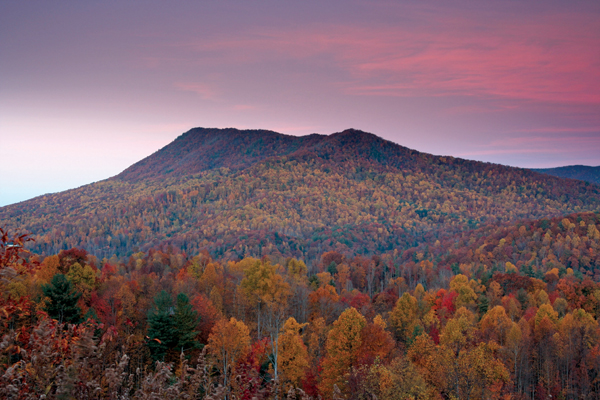If you were looking for a spot to establish Tennessee's 55th state park, fewer locations would be more appealing than a 2,000-acre tract with 16 miles of Blue Ribbon trout streams, endangered species and Appalachian Trail access. As a bonus, it's already surrounded by thousands more acres of protected land. Sound like a good spot? Welcome to Rocky Fork.
On Oct. 30, Gov. Bill Haslam announced that an area in Unicoi County near Johnson City known as Rocky Fork will be the Volunteer State's newest park. Preliminary plans call for an access road, ranger station, primitive campground, picnic areas, trails and interpretive markers about the area's Revolutionary War-era battles.
"A Tennessee State Park in the Rocky Fork area will attract anyone who enjoys the great American outdoors to come to beautiful Unicoi County, have a good time and spend some money to build up the tax base," says Sen. Lamar Alexander.
Officials call Rocky Fork a "park in progress" and have not discussed when it will be open. The property, which was one of the largest unprotected areas in the southern Appalachians, is part of a 10,000-acre tract The Conservation Fund and U.S. Forest Service acquired in 2008. Adjacent to the new park are more than 22,000 acres of U.S. Forest Service designated wilderness, including Sampson and Bald mountains.
The land was purchased with a combination of public funds and more than $4 million in private contributions.
Rex Boner, senior associate for The Conservation Fund, praised Haslam and Alexander and called the new park land a "beloved place ... for generations to come."
"This is truly a remarkable achievement made possible through the loyal support and devoted efforts of so many local, state and national groups and individuals for the recreational and economic benefit of the surrounding communities," Boner explains.
DEGREE CREDIT
You've got a 30° sleeping bag and it only dropped to 40° last night. So why were you shivering in your tent?Truth be told, temperature ratings on bags are more of a suggestion than a guarantee. Take these factors into consideration when selecting a bag:Sleep style: At home, are you usually hot or cold at night? If you are usually cold, get a warmer bag. Also, people who move in their sleep more, pump air in and out of the bag making it less effective.Moisture: Camping on a coastline or in a river gorge? Moisture in the air will make a 30° night feel colder. Go for at least a 15° or 20° bag.Fit: If your bag fits snuggly to your body it will keep you warmer. Oversized bags create extra pockets of air your body will have to warm.Wind: There's a reason weathermen are so obsessed with wind chill. Gusting winds on an exposed campsite can cut right through a bag. Especially if you are camping without a tent, subtract 10°-20° for windy campsites.

